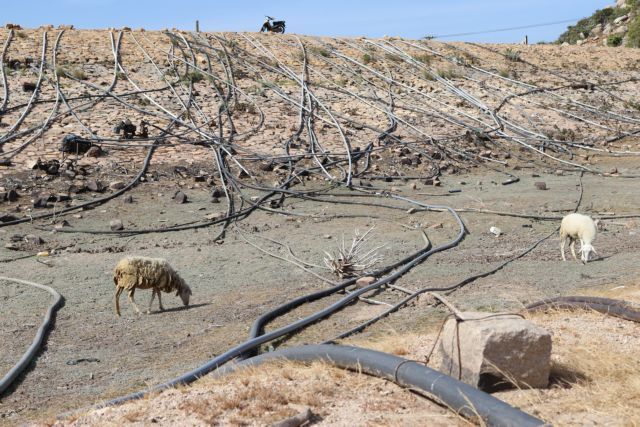 |
|
Ông Kinh Lake in Ninh Hải District, Ninh Thuận Province has been all dried up since the beginning of this year's dry season. Droughts are forecast in central provinces of Việt Nam.
|
The Việt Nam Metrological and Hydrological Administration on Friday said water reserves of northern rivers would remain low between February and July.
From February to April, the water level in the Đà River basin to reservoirs of Lai Châu, Sơn La an Hoà Bình is predicted to be 20 to 50 per cent lower than previous years.
The Thao River basin will lack 40 to 70 per cent of its water reserves compared to previous years, while Lô River basin might be 60 to 90 per cent below its normal capacity.
The lowest water level recorded at the Hà Nội measuring station on the Hồng (Red River) at the end of February or early March is predicted to be 0.2 to 0.3m.
Rivers in the central region and Central Highlands are forecast to suffer severe water shortages over the summer, with volumetric flow rates reducing by 25 to 80 per cent compared to the same period last year.
From March to May, Thanh Hoá, Ninh Thuận and Bình Thuận provinces, as well as Central Highlands localities, will face a water crisis.
From June to August, drought and saline intrusion are set to spread in coastal central provinces from Quảng Trị to Khánh Hoà, similarly to the last dry season.
In the south, as the water level in Cambodia’s Tonle Sap Lake has dropped, the volumetric flow rate on the Mekong River to Việt Nam’s Mekong Delta from February to March is predicted to reduce from 5 to 20 per cent compared to 2016.
In mid-March, the flow rate to Kratie Station in Cambodia might rise as reservoirs will open sluice gates.
According to Hoàng Đức Cường, the administration’s deputy head, saline intrusion in Mekong Delta will get worse this year, peaking in February.
Châu Trần Vĩnh, deputy head of the Department of Water Resources Management said as of February, four of 11 river basins had suffered water shortages including the Mã, Hương, Vu Gia – Thu Bồn and Ba rivers.
However, since the beginning of the dry season, many reservoirs had halted discharges of water or stopped generating electricity to ensure water supply for the rest of the season, from five to seven months. Therefore, despite the shortage, the situation had not yet been serious, he said.
Seasonal rainfall from February to April is forecast to drop by up to 40 per cent compared to previous years, especially in the Central Highlands and southern region, triggering a looming water crisis across the country, according to the Việt Nam Institute of Metrology, Hydrology and Climate Change.
According to the National Centre for Water Resources Planning and Investigation, Việt Nam’s underground water reserve is 91 billion cubic metres per year including 69 billion cubic metres of freshwater. The freshwater that has been licensed to exploit is 3.6 billion cubic metres per year or 9.9 million cubic metres per day.
The centre’s director Tống Ngọc Thanh stressed underground water planning as an immediate solution to respond to the water shortage, especially in urban areas, and subsidence due to excessive exploitation in deltas.
Lê Công Thành, deputy minister of natural resources and environment, asked the Department of Water Resources Management to give early warnings to localities which might face water shortages.
He also urged Việt Nam National Mekong Committee to research Cambodia’s Sesan and Serepok rivers and propose a plan with Cambodia over water sharing and requested Việt Nam Metrological and Hydrological Administration report on saline intrusion in the Mekong Delta. — VNS
 Rivers across Vietnam are facing severe water shortages in the coming dry season.
Rivers across Vietnam are facing severe water shortages in the coming dry season.